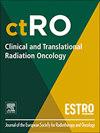Treatment approaches for non-metastatic small cell bladder cancer: a meta-analysis of reconstructed Kaplan–Meier curves
IF 2.7
3区 医学
Q3 ONCOLOGY
引用次数: 0
Abstract
Introduction
Small cell bladder cancer is an aggressive histological subtype and represents one of the most common extra-pulmonary small cell carcinomas. Treatment options include radical cystectomy, chemotherapy, radiotherapy, or combinations of these three. However, the optimal treatment approach remains unknown. This meta-analysis assesses the current literature on non-metastatic SCBC and analyzes different treatment approaches.
Methods
A comprehensive search was conducted in four electronic databases (PubMed, Scopus, Web of Science, and Cochrane Library) utilizing the search terms “small or neuroendocrine AND cancer OR Carcinoma OR Tumor OR Malignan* OR oncolog* OR metastati* OR neoplasm AND bladder or urothelial or Urologic” from inception until March 2024. Eligible papers reported treatment and overall survival (OS) of non-metastatic SCBC patients. A meta-analysis was conducted comparing treatments with radical cystectomy- and radiotherapy-based approaches in addition to the use of chemotherapy.
Results
In total, 12 articles were included in the present systematic review and meta-analysis. Regarding the comparison between radical cystectomy-based treatment and radiotherapy-based treatment, comparable OS was observed between both groups as the reported hazard ratio (HR) was found to be 1.04 (95 % confidence intervals [CI]: 0.90, 1.20, p = 0.6). After including chemotherapy in the analysis, it was observed that using radical cystectomy or radiotherapy with the addition of chemotherapy showed better OS with lower HR (0.53 [95 %CI: 0.39, 0.73], p < 0.0001) compared with radical cystectomy or radiotherapy without chemotherapy. The median OS of radical cystectomy or radiotherapy with chemotherapy was higher than that of radical cystectomy or radiotherapy without chemotherapy, and chemotherapy alone as follows: 30.89 (95 %CI: 23.82, 40.08), 19.67 (95 %CI: 16.26, 23.80), and 19.20 (95 %CI: 16.55, 22.28), respectively.
Conclusion
In this systematic review and meta-analysis, no OS difference was observed in patients undergoing radical cystectomy-based or radiotherapy-based treatments. The addition of chemotherapy to local therapy seems to improve OS. However, given the high heterogeneity of the included studies, these results should be interpreted cautiously.
非转移性小细胞膀胱癌的治疗方法:重建Kaplan-Meier曲线的荟萃分析
小细胞膀胱癌是一种侵袭性的组织学亚型,是最常见的肺外小细胞癌之一。治疗方案包括根治性膀胱切除术、化疗、放疗或三者联合。然而,最佳的治疗方法仍然未知。本荟萃分析评估了目前关于非转移性SCBC的文献,并分析了不同的治疗方法。方法采用检索词“small or neuroendocrine and cancer or Carcinoma or Tumor or malignant * or oncolog* or metastati* or neoplasm and膀胱或尿路上皮或泌尿学”,自成立至2024年3月在PubMed、Scopus、Web of Science、Cochrane Library 4个电子数据库中进行综合检索。符合条件的论文报告了非转移性SCBC患者的治疗和总生存期(OS)。进行了一项荟萃分析,比较了根治性膀胱切除术和基于放疗的治疗方法以及化疗的使用。结果本系统综述和meta分析共纳入12篇文献。对于以根治性膀胱切除术为基础的治疗与以放疗为基础的治疗的比较,两组间的OS可比较,报告的危险比(HR)为1.04(95%可信区间[CI]: 0.90, 1.20, p = 0.6)。将化疗纳入分析后,观察到根治性膀胱切除术或放疗加化疗的OS较好,HR较低(0.53 [95% CI: 0.39, 0.73], p <;0.0001),与根治性膀胱切除术或放疗不加化疗相比。根治性膀胱切除术或放疗加化疗的中位OS高于根治性膀胱切除术或放疗加化疗及单独化疗的中位OS分别为:30.89 (95% CI: 23.82, 40.08)、19.67 (95% CI: 16.26, 23.80)、19.20 (95% CI: 16.55, 22.28)。结论在本系统综述和荟萃分析中,以根治性膀胱切除术为基础的患者和以放疗为基础的患者的OS无差异。在局部治疗的基础上增加化疗似乎可以改善OS。然而,考虑到纳入研究的高度异质性,这些结果应谨慎解释。
本文章由计算机程序翻译,如有差异,请以英文原文为准。
求助全文
约1分钟内获得全文
求助全文
来源期刊

Clinical and Translational Radiation Oncology
Medicine-Radiology, Nuclear Medicine and Imaging
CiteScore
5.30
自引率
3.20%
发文量
114
审稿时长
40 days
 求助内容:
求助内容: 应助结果提醒方式:
应助结果提醒方式:


